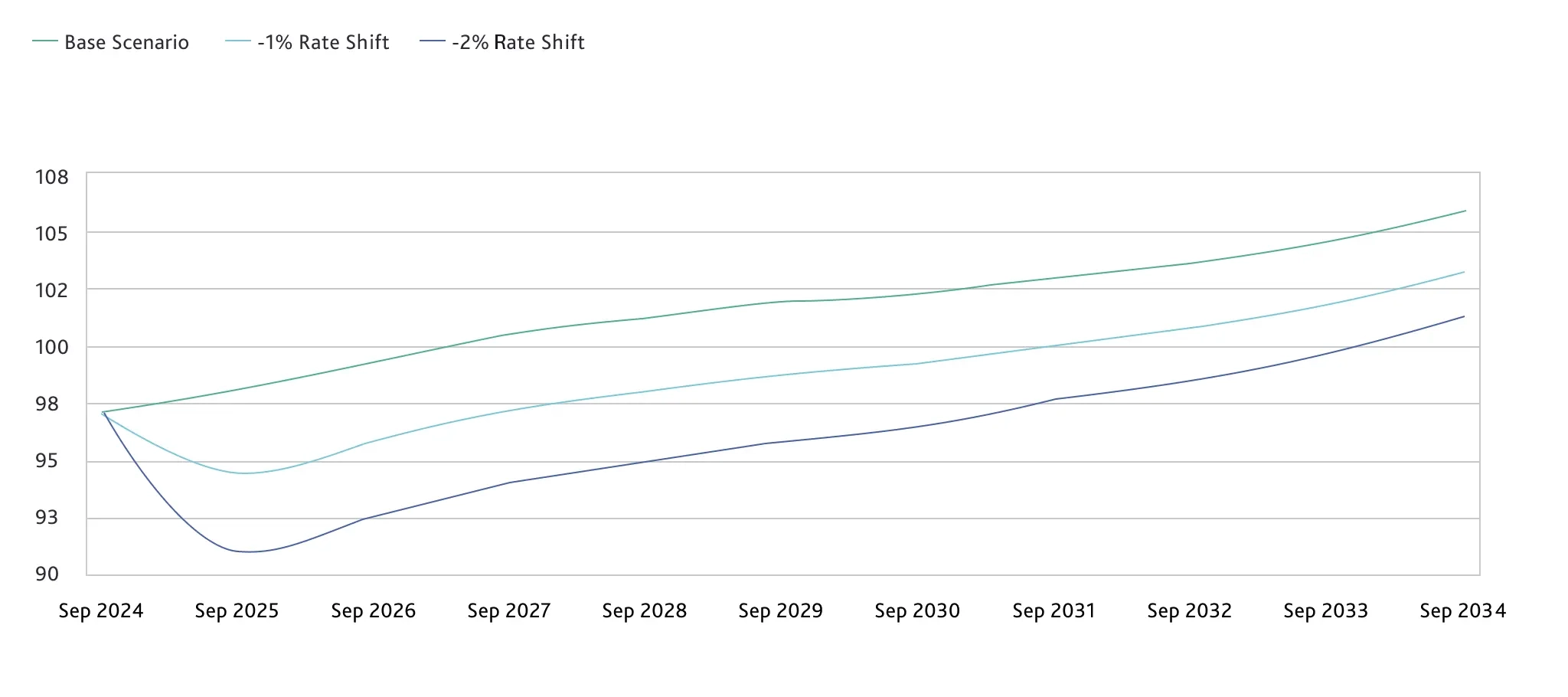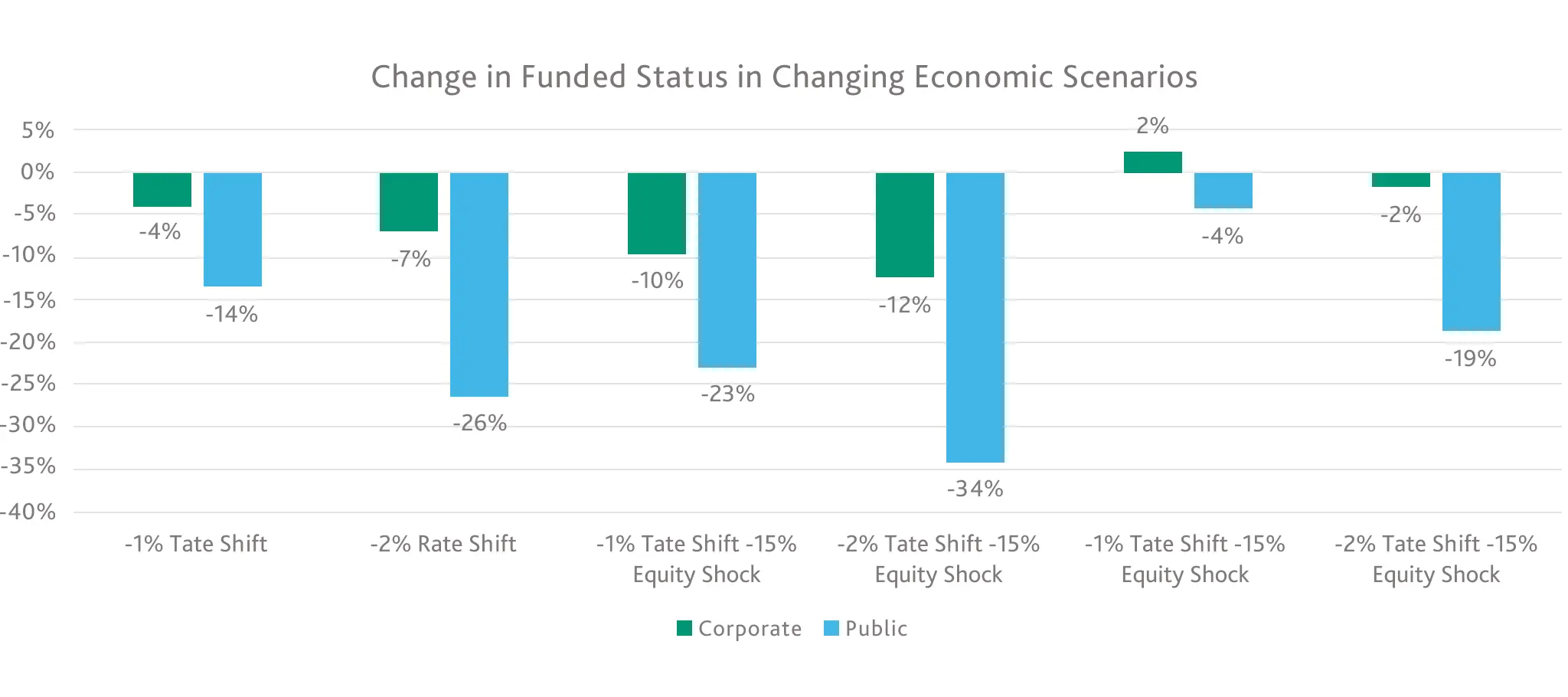Fed Rate Cuts and a Presidential Election?
- Amanda Flemming and Adam Gyselinck |
- Moody's Analytics
The Fed’s decision in September to lower interest rates by 50 basis points, with further reductions anticipated to reach up to 200 basis points by the end of 2025, marks a significant shift in economic conditions. This white paper delves into the ramifications of these economic shifts while also showcasing how the dynamic modeling capabilities of PFaroe DB can enable managers to effectively navigate these challenges.
The Impact of Lower Interest Rates on Pension Plans
Lower interest rates pose a challenge for pension plans, affecting their liability valuations and investment income. A decrease in rates typically results in higher plan liabilities, requiring additional contributions from plan sponsors, and the need to generate sufficient returns to meet future obligations. The chart below illustrates the trajectory of a sample frozen pension plan on its path to termination, highlighting the impact of declining projected interest rates on its funded status. Without changing the asset allocation, a 1% drop in projected interest rates, represented by the light blue line, indicates that the plan would require nearly four years to return to its initial funded status of 97%. In a more extreme scenario, the dark blue line depicts a 2% decrease in projected interest rates, demonstrating that the plan would necessitate a longer period of approximately seven years to return to the same level of funded status.

Just as corporate pension plans experience an immediate decline in their funded status, public pension plans face a similar challenge. However, the situation for public pension plans is exacerbated by their generally lower levels of funding, with any reduction in funded status significantly affecting employer contributions. This often leads to a situation where employers must add additional risk to their portfolio or contribute additional cash to compensate for the loss. Projected required contributions under different interest rate environments are shown in the following chart.

Election Uncertainty and Pension Plan Management
Presidential elections introduce uncertainty into financial markets, potentially leading to volatility and shifts in economic policy. Changes in tax, trade, and regulatory policies can have far-reaching effects on investment returns and pension liabilities.
PFaroe DB: Navigating Economic Uncertainty
We’ve covered how interest rates can impact pension plans liability projections, but what also happens to the return seeking assets in these scenarios? PFaroe DB stands out as a comprehensive solution for pension plan managers seeking to adapt to changing economic conditions with stress testing and strategic planning. By simulating various economic environments, including low-interest rate scenarios and different election outcomes, PFaroe DB enables managers to assess the resilience of their plans and make informed decisions.

Closing
To sum up, today’s economic environment presents a complex set of challenges for pension plans, primarily due to the anticipated lower interest rate environment and the uncertainty brought on by the forthcoming presidential election. PFaroe DB positions itself as a potent solution for pension plans looking to navigate these changing economic landscape. It facilitates the simulation of a wide range of economic conditions, including fluctuating interest rates and market returns, enabling pension plans to make well-informed decisions for the benefit of their participants.




